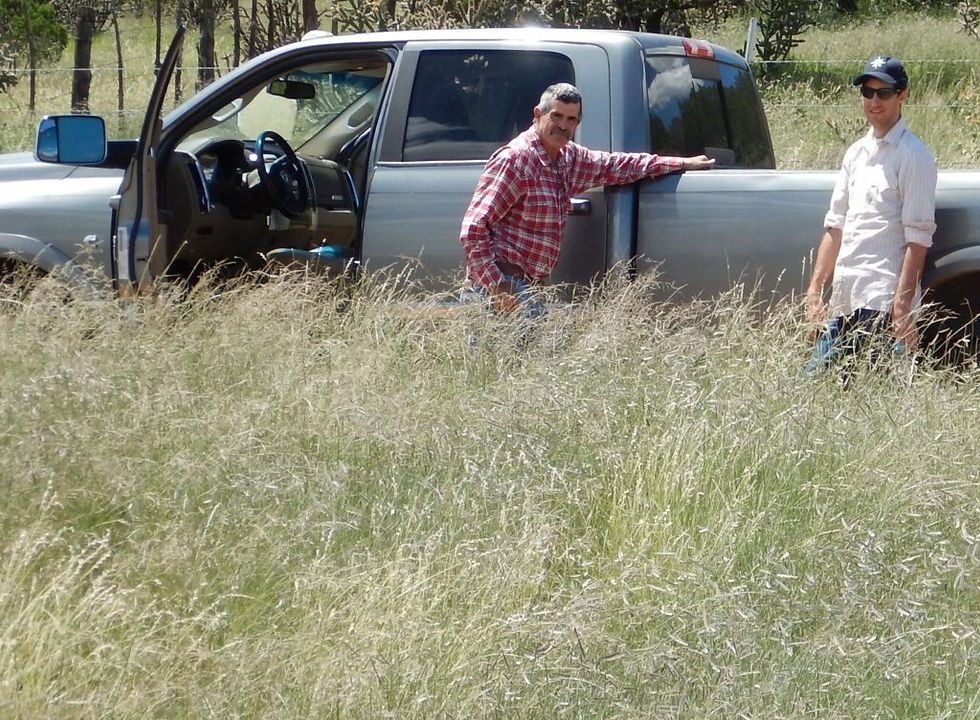Keeping Working Lands Working with Succession Planning
- Oct 15
- 4 min read

If you have been thinking about how you are going to transition your agricultural land to the next generation, you are not alone. Estimates suggest that in the U.S. 30-40% of agricultural land will be changing hands in the next 10-15 years (most of it through wills and trusts).
The biggest succession planning challenge for most of these operations is that they don't have a succession plan. While 56% of operations say they are beginning a succession plan, they often stall on the completion of this plan because of the people issues.
Having some preliminary family conversations before you engage your team of professionals (attorneys, financial planners, accountants, etc.) can reduce the backlash of emotions that can occur when plans are solidified without the clarity of common values and key assumptions by different members of each generation. Then there's the added challenges if you don't have a member of the next generation that wants to manage the operation or can afford the operation. That's where clarity, vision, human creativity, perseverance, and adaptability are critical to success.

One example of a successful ranch transfer despite challenging circumstances is the Ranney Ranch near Corona, New Mexico. Nancy Ranney was the matriarch of the family and worked very hard from 2002 when she took over management of the ranch to improve the grazing management of the ranch as well as developing a grass-finished operation. She notes:
“The question in 2002 was could we afford to keep this operation going. I was excited about the opportunity as I was the most on the ground of my siblings and I have a background in land use planning. I had enough scientific training to be confident about the possibility of range regeneration under new management techniques. My father had been a traditional rancher and running a ranch was all new to me, but happily, Melvin (the ranch manager) was willing to stay on and guide me. I was really working to bring down our costs and make it viable for the family which was a struggle. Along about 2007, we had the prospect of wind energy emerge as a source of income which was exciting both for the family and the community.”

Preparing for the 2020 transfer was more difficult. Land values from when George Ranney had purchased the ranch in the ‘60s were now 12-15 times greater. The next generation did not have someone ready to take the management reins or who could afford the transfer value of the ranch. So Nancy had to look further afield and consider alternate financing options. She talked to a number of young people with the idea of having them come together to purchase the ranch, possibly with Nancy and her husband, David Levi, owning part of the ranch and allowing the rest of the family to cash out on a partial sale.
She also looked at other investor possibilities including real estate investment trusts like Iroquois Valley Farmland REIT and some newer holding companies but nothing panned out.
So Nancy reached out to rancher friends, HMI, the Quivira Coalition, Audubon, and the Savory Institute—anyone who might have ideas and connections. "As I was beginning, our family decided to put a conservation easement on the ranch of almost 10,000 acres," says Nancy. "We had considered this earlier but had also been interested in wind development. In early 2020, it became clear that our area was not going to be developed for wind. At that point we moved ahead with a conservation easement with the New Mexico Land Conservancy and I let interested buyers know this. It was dicey to get the easement on so quickly, but we did it. It is better to do this well in advance of a sale. We were fortunate that both interested buyers at the time were enthusiastic about the conservation easement. I think it was very unusual.”

During this process, Nancy worked with her two brothers who are general partners with her. There are 12 limited partners –three spouses and nine offspring—who don’t have decision-making power but who do provide input. All of the family has been interested in the ranch beyond its monetary value, and several have helped with aspects of the ranch management including marketing grassfed beef and keeping the books.
“I am grateful I had almost 20 years to run the ranch,” says Nancy. “(HMI Professional Certified Educator) Kirk Gadzia was encouraging and gave me a framework to work with. Our family had many value-based conversations on key issues like whether or not to lease to wind development and when and how to sell the land and when to pursue the conservation easement. Over time that understanding of the ranch and what it meant to all of us gelled. I’m amazed at how well we got through it, you hear so many stories of families coming apart. I feel that I had the opportunity to explore other avenues and I learned a lot about different approaches to buying land and how people want to be shareholders in new types of operations.
“I marvel that it worked out so well for all of us, as there were a lot of moving parts. In the end, I believe it was a common vision of work on the land that carried us through."

If you are interested in developing your skills and knowledge to better work with your farm or ranch team and make the best use of your team of professionals, sign up for HMI's Online Holistic Succession Planning Course. This online course is facilitated by HMI Professional Certified Educator Kelly Sidoryk and she will help you develop the tools you need to get your succession conversations going in the right direction. Succession planning keeps working lands working!




